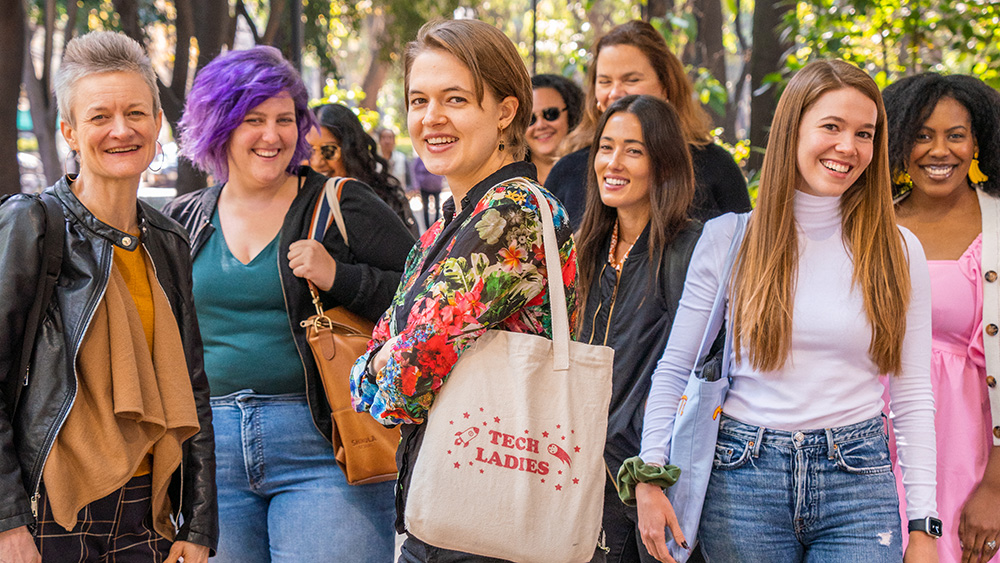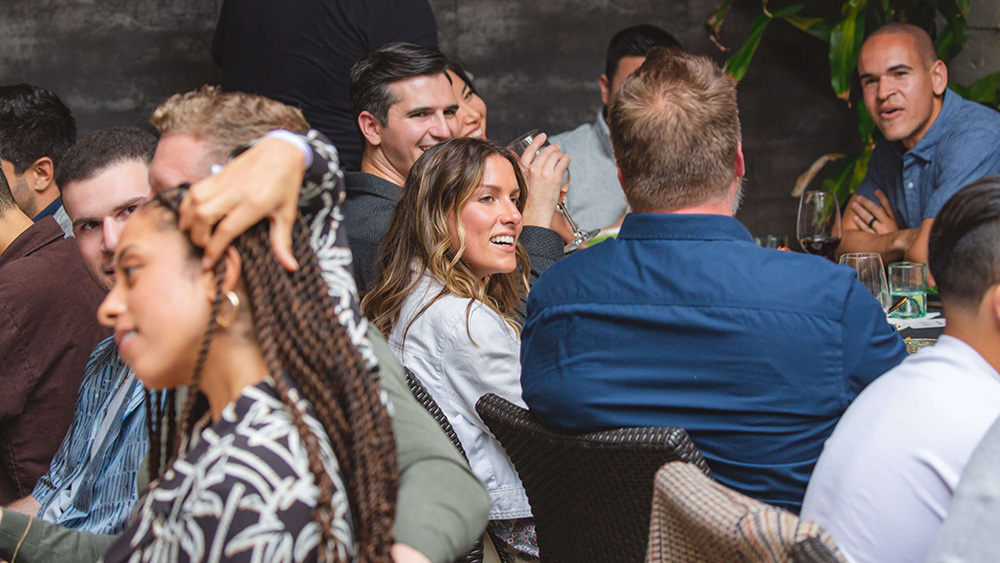
Tech Ladies, a private community for women in tech, boasts 100,000 members worldwide. (Courtesy Tech Ladies)
Professionals, especially Gen Z, seem hungry to be a part of private networks that often vet their members and offer exclusive benefits. Some examples: Chief, for women executive leaders; Hampton, for high-growth founders; Swipe Files, for marketers; and Tech Ladies, for women in tech. But what makes members shell out what can be big bucks to join these communities? And what should event and association marketers take from this trend? Here are four attributes that make them so attractive:
Belonging — The screen-filtered world we live and work in has made us crave social connection and belonging. Many in the workforce are looking for communities of like-minded individuals to build relationships and further their professional growth. While this is a mainstay of associations, these online communities provide a smorgasbord of ways to connect immediately — large, medium, and small groups, and subsets by industry, role, identity, and more. We all belong to more than one group in our lives and these communities give members a chance to find multiple ways to engage in genuine interactions.
Personalization and control — Giving members control over their experience is key to keeping them engaged in the community. The most exciting feature of even the biggest membership communities is what can be called a “core group,” a small cohort of vetted individuals who meet regularly, online or in person, often with a professional coach — interactions that help members with their specific challenges. As with any relationship, members aren’t only receivers, they also give advice and can act as a mentor within the group.
In addition, the work-focused communities often offer curated professional development and other resources on demand, so members can grow at their own pace. They can also choose to attend online and in-person events.
Organic networking — Speaking of in-person events: For a lot of professionals, especially those who’ve had most of their professional conversations over Zoom, networking in person can be difficult and anxiety-ridden. Finding a supportive community that starts online and then moves into the “real world” can help make in-person events more productive because conversations will start more naturally and easily.
Humanization — Not only is the humanity of each member acknowledged with personalization, belonging, and authentic networking, but the communities themselves are marketed on their own humanity. Many of these communities have been started by one person or a small group of founders. Whether it’s a Peloton instructor or a successful startup entrepreneur, the personality behind a community plays a big role in attracting members. The websites tend to feature the photos, names, and bios of the creators, certain workshop or masterclass presenters, and highlighted members.

Members of Hampton, a paid membership network for entrepreneurs, founders, and CEOs, enjoy a dinner event. (Courtesy of Hampton)
Create a Community
There are many ways to leverage membership community values to attract audiences to our events. Here are six:
- Facilitate connections that extend beyond the event — before and after.
- Include names and pictures of event hosts or executive committee members on your website and in your marketing materials.
- Ensure networking isn’t confined to traditional spaces or just the days of the event.
- Offer on-demand content for registrants after the conference.
- Speak their language — don’t use jargon or outdated marketing messages.
- Consider identifying and reaching out to existing communities that align with your target audience to collaborate on content and opportunities.
Nadia Bennet is a copywriter at mdg, A Freeman Company, a full-service marketing and public relations firm specializing in B2B events.
On the Web
To learn more about the surge in exclusive, paid professional communities, read the CMSWire article, “Paid Professional Communities: The New B2B Playgrounds.”
